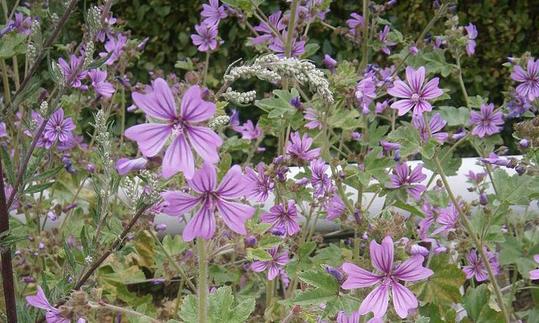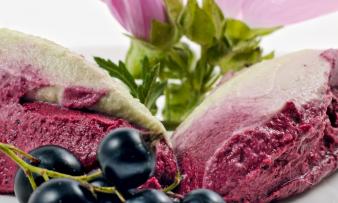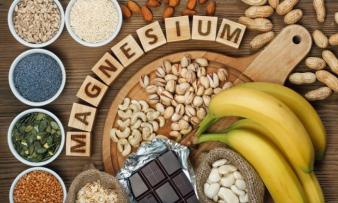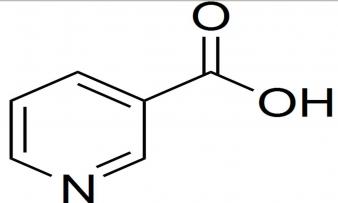Table of contents
The raw wild mallow ( Malva sylvestris) or cheeseweed (cheeseweed) is characterized by a high content of health-promoting mucilage. It is possible to purchase organic quality.
Wild mallow: Use in the kitchen
Is wild mallow edible? The leaves and flowers of wild mallow have a mild taste and are well tolerated. Thanks to its binding properties, the wild plant is ideal in green smoothies or as a basis for vegan soups and sauces.
How can you eat mallow? Young leaves taste good fresh in salads, raw or pickled (similar to sauerkraut). Heated, the leaves taste good in patties, on pizzas, in lasagne, as a vegetable filling in dumplings or as steamed wild vegetables.
Can you eat mallow flowers? Since mallow flowers are edible, they are suitable as a raw decoration, e.g. on vegan or vegetarian dishes. The flowers can be used to make syrup or wild plant lemonade.
Use of other plant components: The very young, low-fiber and finely chopped roots of the mallow are usually eaten heated, rarely raw. Like the leaves, the roots also have a thickening effect. The green, unripe mallow fruit can be pickled raw in a slightly sour sauce, similar to olives. Mallow fruits also taste good as a raw snack 22 or as a topping.
Wild mallow: tea recipe for fresh infusion
To make mallow tea, add 3-5 g (1 tsp = 1.8 g) of finely chopped plant parts (leaves, flowers, herbs) to cold water, bring it to the boil and, after a steeping time of 5-10 minutes, strain it through a tea strainer. A cold extract (macerate) over 5-10 hours is recommended, which is then boiled briefly before drinking or gargling. This helps to dissolve the mucous substances contained in the tea. As a bronchial tea, drink a cup of Malva Sylvestris tea (organic) sweetened with honey several times a day. 1,2
Vegan mallow recipes can be found under the note: " Recipes that have the most of this ingredient ".
| Not only vegans or vegetarians should read this: Vegans often eat unhealthily. Avoidable nutritional errors. |
Shopping - where to buy mallow?
Dried and cut mallow leaves and mallow flowers can be bought as tea in conventional or controlled organic quality. The herbs are available in single varieties or as a tea blend in tea bags or loose, e.g. in supermarkets such as Coop, Migros, Spar, Rewe or Edeka. Dried mallow is available online, in health food stores, organic shops or tea shops. We have not yet found any products containing mallow in supermarket chains such as Aldi, Lidl, Denner, Volg, Hofer, Denn's Biomarkt or Alnatura (organic). With a bit of luck, you can buy wild mallow as wild vegetables at the weekly market, directly from the farmer or via a subscription box (seasonal box, green box).
In addition to mallow-containing cough teas or bronchial teas, pharmacies and drugstores also sell other phytopharmaceutical products, such as gargle solutions, cosmetic products, and cough syrup. The quality of mallow leaves and flowers is specified in the European Pharmacopoeia ( Ph. Eur.). 5
Mallow seeds can be found in specialist shops or in garden centers. Raw mallows (raw food quality or raw quality) can be bought as pot plants.
Found in the wild - Season:
Several branched, rough-haired stems emerge from the spindle-shaped root of the wild mallow, which are upright or prostrate. The alternate, hairy leaves have long stalks, usually five lobes and are notched at the edge. With a length of around 7 cm and a width of around 6 cm, they are smaller than the size of a fist. The flower stalks, which are also hairy, emerge from the leaf axils and bear blue-violet to pink-red flowers with five petals at the end. These are deeply grooved and each have three longitudinal stripes. The cheeseweed fruits are multi-seeded, disc-shaped capsules that are reminiscent of a wheel of cheese. 2.6
Where can you collect wild mallow? The wild mallow (height approx. 30-100 cm) grows on rubble sites, fallow land, roadsides, embankments, walls, gardens, field and meadow edges, sunny slopes, barren land and light forests. The cheeseweed plant needs nutrient-rich, calcareous and dry soil. 2,3,7,8
Flowering time and season of the mallow: Mallow leaves and mallow flowers are collected during the flowering period from early summer to autumn. The main months for collecting are June to August. The flowers are picked with the calyx but without the stem. 2.9 When can you collect wild mallow seeds? The green seeds of the cheeseweed can be harvested in summer, the ripe ones in autumn. The roots of mallow plants that are no more than one year old are dug up in spring or autumn.
Storing mallow:
Raw mallow leaves with stems can be stored for a few days in a glass of water or in a plastic bag. Fresh mallow leaves can be blanched and frozen. If you want to dry raw leaves, place them in an airy place in the shade. Sufficiently dried leaves can be easily rubbed. Store the rubbed leaves in a dark and well-sealable glass or metal tin.
Wild mallow: ingredients - nutritional values - calories
100 g of raw wild mallow contains 2.7 g of fat, 55 g of carbohydrates (of which 27 g of fiber) and 20 g of protein. The calorie content is 272 kcal/100g. Compared to the nutritious mallow leaves,lettuce has a very low nutrient density of 13 kcal/100g. 10,11
Wild mallows are rich in iron (78 mg/100g), fluorine (7000 µg/100g) and essential amino acids. Tryptophan covers 99% of the daily requirement at 0.25 g/100g and methionine is the limiting factor at 0.37 g/100g (40% of the daily requirement). 10,11
Compared to other edible plants, sauerkraut contains very high amounts of fluorine. The element is found in much lower concentrations in raw sorrel (70 µg/100g) or raw wild garlic (49 µg/100g). Fenugreek leaves (18 mg/100g) and raw morels (12 mg/100g) are rich in iron. 10,11 Raw, peeled hemp seeds (0.61 g/100g) and raw wheat germ (0.32 g/100g) also contain a lot of tryptophan.
To balance the limiting methionine, you can combine wild mallow with raw nasturtium. 10,11
Does wild mallow contain mucilage? The ingredients of wild mallow that determine its effectiveness are approximately 5-12% mucilage. The flowers contain more mucilage than the leaves. Additional mallow flower ingredients are 6-7% anthocyanins, i.e. water-soluble plant pigments (flavonoids), with the main component being malvin. 1,6,12,13,14
Other ingredients are vitamins, coumarins, tannins, sterols, caffeic acid, chlorogenic acid and traces of volatile aromatic components (sesquiterpenes, diterpenes). 1.6
The complete ingredients of Wild Mallow, the coverage of the daily requirement and comparison values with other ingredients can be found in our nutrient tables in CLICK FOR below the ingredients picture.
Wild mallow: Effects - Health aspects
The anti-irritant mechanism of action of mallow leaves and flowers is based on the plant mucilage they contain, which forms a viscous solution when combined with water. These form a protective film on the surface of the bronchial mucosa and thus have an anti-irritant and cough-suppressant effect. Inflammations subside more quickly overall. 1,12,13,15
In addition, mucilages have a protective effect on stress-related gastric mucosal lesions, as they cover mucosal damage in the stomach and have a buffering effect on increased gastric acid production. 12 Results of pharmacological studies on wild mallow have shown an antimicrobial effect against Helicobacter pylori. 1
The vagina, like the oral cavity, is lined with a multilayered keratinized squamous epithelium. This means that a positive effect is theoretically possible in the case of inflammation in the genital area. The treatment approach for these indications with mallow flowers is plausible, but not yet supported by clinical studies. 13
A randomized, double-blind clinical trial (2020) with 51 children with atopic dermatitis showed significant improvements in symptoms with treatment with wild mallow compared to the placebo group. The external application of Malva sylvestris extract cream is effective in children with atopic dermatitis symptoms. 16 However, the number of study participants limits the significance.
A scientific review (2019) on various medicinal plant extracts and their use for wound treatment confirms that (wild) Malva sylvestris promotes the formation of healthy (fibrosis-free) granulation tissue. 17
A placebo-controlled clinical study (2015) on adults with functional constipation found that the aqueous extract of Malva sylvestris L. flowers is effective and safe for treatment. 18 Mucilages have swelling and filling properties, which stimulate intestinal movement (peristalsis). 12
A randomized, double-blind, placebo-controlled clinical trial (2021) investigated the efficacy and safety of a syrup containing Malva sylvestris extract (KalobaTUSS®) for the treatment of cough in 106 children with acute cough. The conclusion is that it is well tolerated and the severity and duration of cough in children are reduced. 19
Dangers - Intolerances - Side effects:
Contraindications, side effects or other interactions are not known, nor are there any risks or critical ingredients. 5,12,20
One possible interaction of wild mallow can be the delayed absorption of medication due to the high content of mucilage. When using medication, you should plan at least an hour between ingesting mallow leaves or mallow flowers and medication. 3
There are no studies on the safety of using mallow during pregnancy and breastfeeding.
Use as a medicinal plant:
Is the wild mallow a medicinal plant? The flowers (Malvae sylvestris flos) and leaves (Malvae folium) of the two subspecies Malva sylvestris ssp. sylvestris and ssp. mauritiana serve as parent plants for medicinal use, 5 as do the dried flowers of cultivated varieties. 14
The HMPC ( Committee for Herbal Medicinal Products) has classified mallow flowers and mallow leaves as a traditional herbal medicinal product. The areas of application are based on many years of experience. The plant components serve as an anti-irritant agent for inflammation of the mucous membranes in the mouth and throat and the associated dry cough, as well as for the relief of mild gastrointestinal complaints. 5
The ESCOP monograph ( umbrella organization of national European societies for phytotherapy) lists dry, irritating coughs and irritations of the oral, pharyngeal and gastric mucosa as indications 20 and Commission E ( Expert Committee for Herbal Medicinal Products) lists inflammations of the mucous membranes in the oral and pharyngeal area and the associated irritating cough. 1,12
The dosage is 1.5-2 g of medicinal plant drug per day according to ESCOP and 5 g according to Commission E on corresponding preparations. 12,20 After consultation with a doctor, the dosage for children and adolescents aged 0-1 year is 1 g, for those aged 1-4 years 1-2 g, for those aged 4-10 years 2-4 g and for those aged 10-16 years 4-5 g per day. 4
Folk medicine - natural medicine:
In the 15th century, sedum was used for coughs and hoarseness, for "rotten mouth" and "consumption" (tuberculosis). 1 In the late Middle Ages (16th century), the plant was called omnimorbia, which means "cure for all diseases".
Today, the medicinal plant is used in folk medicine to treat wounds in the form of poultices or baths. 6 However, improper handling, such as applying fresh leaves, carries the risk of secondary infections. 2 Weeping eczema, boils, abscesses and insect bites are treated externally with mallow extract, as are complaints caused by hemorrhoids. 6,9
Internally, mallow is used in traditional medicine for colds such as coughs, hoarseness, sore throats, pharyngitis or bronchitis, as well as for asthma, stomach problems, diarrhea, irritable stomach, bladder problems, uterine problems or rheumatism. In some cases, there is no evidence of its effectiveness in the above-mentioned illnesses. 2,6,9,12,14
Occurrence - Origin:
The wild mallow probably originally comes from southern Eurasia. Since the Neolithic period, it has been a cultural companion throughout the known world. The cultivation of the wild plant began in Roman times. Today, the wild mallow is widespread worldwide in the subtropical and temperate zones of both hemispheres due to introduction. 3,5,9,14
Growing in the garden or as a pot plant:
Where should you plant wild mallow? Mallows need sunny to full sun locations with nutrient-rich, humus-rich and rather calcareous soil. The plants prefer clayey or heavy soil, but also grow in slightly sandy subsoil. 21
Propagation takes place in early spring from March to May by sowing and by cuttings directly in the open field or in a deeper plant pot as a potted plant. 9.21
In the open air, the plants should be grown at a distance of about 40 cm. As they germinate in the dark, the Malva sylvestris seeds are pressed about 1 cm deep into the soil and covered with soil. The germination period is about 10-14 days. The plants require a high nutrient content and are considered heavy feeders. A nitrogen-based fertilizer is ideal. Mallows are hardy and tolerate frosts down to -18 °C. 21
Mallow rust is a typical plant disease of mallows. The rust fungus spores ( Puccinia malvacearum) are noticeable as brownish to rust-brown pustules on the underside of the leaves. The plants can be treated preventively with a broth (liquid manure) made from horsetail. Infected plant parts are cut off and disposed of in the household waste. 1,3,21
The mallow flea beetle ( Podagrica fuscicornis) is responsible for holes in mallow leaves. If the number is too high, biological measures can be taken with diatomaceous earth powder or neem. 21
Cultivation - Harvest:
The mallows ( Malva sylvestris and ssp. mauritiana) available in the trade come mainly from wild collection, with small amounts from conventional or controlled organic cultivation. The main growing countries are Bulgaria, Albania and Morocco (leaf drug) as well as Hungary, the Czech Republic and some Balkan countries (flower drug). 5,14
Animal protection - species protection - animal welfare:
The main flowering period is in the summer months from June to September, which is why it is referred to as summer nectar. Nectar includes the entire food supply of a flower for insects, i.e. nectar, pollen and honeydew. The nectar value of the cheeseweed is high and the pollen value low to medium (nectar value and pollen value scale: none, low, medium, high, very high). Hymenoptera and hoverflies like to visit the mallow flowers. Wild bees use the flowers as a place to sleep. 8
Possible confusion:
The wild mallow can be confused with other mallow species or varieties. There is no danger of this, as all 20-30 mallow species from the genus Malva are non-toxic. Bush mallows, cup mallows or hibiscus flowers ( Hibiscus sabdariffa), the latter known colloquially as red mallows, belong to other genera. They also differ from the real mallows ( Malva) in their active ingredients. 2
General information:
Malva sylvestris (German: Wild Mallow, Käsepappel) is a plant species in the genus Malva and belongs to the mallow family (Malvaceae).
Alternative names:
In the Middle Ages, the wild mallow (mallow, wild) was misleadingly called poplar or Roman poplar. However, the name has nothing to do with the willow plant poplar ( Populus). The alternative name could refer to an edible pulp ('Papp' or 'Pappe') that was made from the slimy fruits. The plant only has so much in common with cheese (cheese poplar) that the fruits are reminiscent of a wheel of cheese.
What is the wild mallow often called? Common names that reflect the popularity and use of this plant are hare poplar, goose poplar, hemp poplar, St. John's poplar, horse poplar, rose poplar, poplar rose, forest poplar, weaver poplar or poplar. The wild mallow is often called cheese poplar, cheese poplar, large cheese poplar (large cheese poplar), poplar cheese, cat cheese, Dutch cheese, cheese herb, cheese herb, cheeseli, cheese herb, cheeselichrut, Keeske, Möppekees, Zigerli, Zigbli, Nüsserli, heavenly bread or semmeln. The wild mallow is also called goosefoot, neck flower, swelling herb, stubble herb, claws, claw flower, piss flower, black mallow, horse mallow, field mallow, way mallow, Algiers mallow, Wesing or blue mallow (blue mallow, blue mallows).
Hasenpappel: another name? Similar names are Hasenbrot or Hasenkeese.
Drug names (medicinal drug names) for mallow leaves are Malvae folium (pl. Folia Malvae, Malvae folia) and for mallow flowers Malvae flos (Flos Malvae, pl. Flores Malvae, Malvae flores). Synonymous drug names (folk medicine names) for mallow flowers are blue poplar flowers, cheese poplar flowers, horse mallow flowers, horse poplar flowers, forest mallow flowers, holly mallow flowers or wild mallow flowers and for mallow leaves cheese poplar leaves or hare poplar leaves or cheese poplar tea.
English names and alternative names are common mallow, mallow flowers, mallow leaf, high mallow, tall mallow, blue mallow, dwarf mallow, roundleaf mallow, malva, wild malva, maule, hollyhock, buttonweed, cheeseplant, cheeseweed or cheeses.
Latin synonyms are Malva ambigua GUSS., Malva elata SALISB., Malva erecta C. PRESL; Malva glabra DESR., Malva mauritiana L., Malva obtusa MOENCH, Malva ruderalis SALISB., Malva sylvestris var. incanescens GRISEB. or Malva vulgaris SF GRAY. Incorrect spellings are wild malva, malve wilde, Malva silvestris, Malvas, Malva selvatica, Malva silvestre, Malve sylvestris, Malvas silvestres or Sylvestris malva.
Literature - Sources:
Bibliography - 22 Sources (Link to the evidence)
| 1. | Blaschek W. (Herausgeber). Wichtl –Teedrogen und Phytopharmaka. Ein Handbuch für die Praxis. Stuttgart: Wissenschaftliche Verlagsgesellschaft mbH; 6. Auflage. 2016. |
| 2. | Pahlow M. Das grosse Buch der Heilpflanzen. Gesund durch die Heilkräfte der Natur. Hamburg: Nikol Verlagsgesellschaft mbH & Co. KG; 8. Auflage. 2019. |
| 3. | Niederegger O, Mayr C. Heilpflanzen der Alpen. Gesundheit aus der Natur von A bis Z. Innsbruck: Tyrolia-Verlag; 2006. |
| 4. | Lüdi-Rinderknecht GM. Phytotherapie in der Kinderheilkunde. Aktueller Stand der Dosierung. Zürich: Zurich Open Repository and Archive. University of Zurich; 2008. |
| 5. | Arzneipflanzenlexikon.info Malve. |
| 6. | Fleischhauer SG, Guthmann J, Spiegelberger R. Enzyklopädie essbare Wildpflanzen. 1. Auflage. Aarau: AT Verlag; 2013. |
| 7. | Oberdorfer E, Schwabe A, Müller T. Pflanzensoziologische Exkursionsflora für Deutschland und angrenzende Gebiete. 8. Auflage. Stuttgart (Hohenheim): Eugen Ulmer Verlag; 2001. |
| 8. | Kremer BP. Mein Garten – Ein Bienenparadies. Bern: Haupt Verlag; 2. Auflage. 2018. |
| 9. | Bown D. Kräuter. Die grosse Enzyklopädie. Anbau und Verwendung. München: Dorling Kindersly; 2. Auflage. 2015. |
| 10. | Diet-health.info Nährstofftabellen. |
| 11. | USDA (United States Department of Agriculture). Nährstofftabellen. |
| 12. | Schilcher H, Kammerer S, Wegener T. Leitfaden Phytotherapie. München: Elsevier GmbH; 3. Auflage. 2007. |
| 13. | Vogel S. Phytotherapie bei gynäkologischen Infektionen. München: 2014. |
| 14. | Medizinalpflanzen.de Malvenblüten – Malvae sylvestrae [sic!] flos (Ph. Eur. 7.0 01/2011:1541). |
| 15. | Reichling, Müller-Jahncke, Borchardt (Hrsg.). Arzneimittel der komplementären Medizin. Eschborn: Govi-Verlag; 2001. |
| 16. | Meysami M, Hashempur MH, Kamalinejad M, Emtiazy M. Efficacy of short term topical Malva sylvestris L. Cream in pediatric patients with atopic dermatitis: a randomized double-blind placebo-controlled clinical trial. EMIDDT. 2020;20. |
| 17. | Medellín-Luna MF, Castañeda-Delgado JE, Martínez-Balderas VY, Cervantes-Villagrana AR. Medicinal plant extracts and their use as wound closure inducing agents. Journal of Medicinal Food. 2019;22(5):435-443. |
| 18. | Elsagh M, Fartookzadeh MR, Kamalinejad M, et al. Efficacy of the Malva sylvestris L. flowers aqueous extract for functional constipation: A placebo-controlled trial. Complementary Therapies in Clinical Practice. 2015;21(2):105-111. |
| 19. | Carnevali I, La Paglia R, Pauletto L et al. Efficacy and safety of the syrup “KalobaTUSS®” as a treatment for cough in children: a randomized, double blind, placebo-controlled clinical trial. BMC Pediatr. 2021;21(1):29. |
| 20. | Bvl.bund.de Stoffliste des Bundes und der Bundesländer Kategorie ‚Pflanzen und Pflanzenteile‘. Berlin: BVL-Report 8.4.; 2014. |
| 21. | Kraeuter-buch.de Malve Malva sylvestris. Purle T. 2018. |
| 22. | Pfaf.org Plants For A Future. Malva sylvestris - L. |









Comments